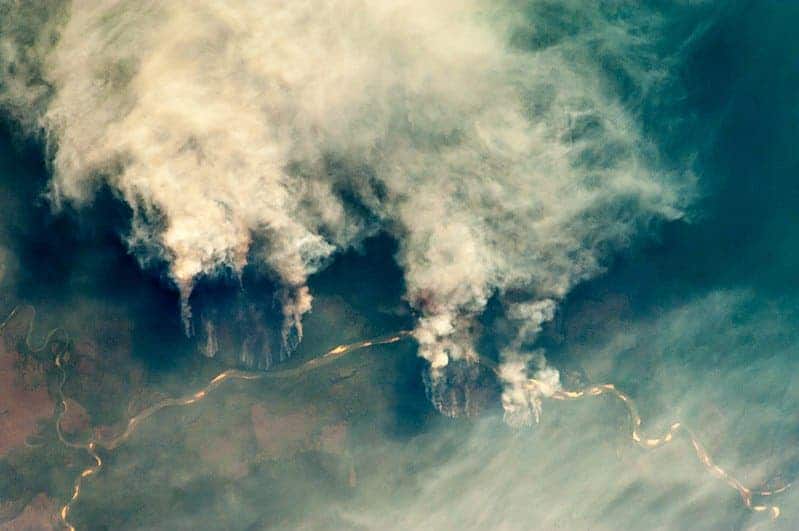In just two years, the Amazon rainforest could reach a tipping point in which it would stop producing enough rain to sustain itself and start slowly converting into a savannah, releasing billions of tons of carbon emissions to the atmosphere, a Brazilian economist warned.

Usually described as the “lungs of the planet,” the Amazon has been severely affected by a set of forest fires during its latest dry season. The policies of President Jair Bolsonaro were linked to the unusual number of fires, as farmers clear out land for their crops.
Monica de Bolle, a senior fellow at the Peterson Institute for International Economics in Washington DC, issued the tipping point warning in a policy brief, which created controversy. Some believe the tipping point is still 15 to 20 years away, while others agree with de Bolle.
“It’s a stock, so like any stock you run it down, run it down – then suddenly you don’t have any more of it,” de Bolle, whose brief also recommended solutions to the current crisis, told The Guardian.
Brazil’s space research institute, INPE, reported that deforestation in August was 222% higher than in August 2018. Maintaining the current rate of increase INPE reported between January and August this year would bring the Amazon close to the estimated tipping point as soon as 2021, de Bolle said.
“If Bolsonaro is serious about developing the Amazon without paying any attention to sustainability or maintaining the forest’s standing, these rates would happen within his mandate,” she added.
One of Brazil’s leading climate scientists and a senior researcher at the University of São Paulo’s, Carlos Nobre questioned her calculation that estimated deforestation would quadruple from an estimate of nearly 18,000 km2 this year to nearly 70,000 km2 by 2021.
“It seems very improbable to me – the projected deforestation increase is more an economic calculation than ecological,” he said. However, he added: “We are seeing an increase in deforestation, I am not questioning this.”
Last year, Nobre argued in an article written with celebrated American conservation biologist Thomas Lovejoy that the Amazon tipping point could happen in eastern, southern and central Amazonia when 20% to 25% of the rainforest has been felled – not expected for 20 to 25 years. He has since brought forward his prediction by about five years.
“The Amazon is already 17% deforested, so when you calculate at the current rate of deforestation, this 20% to 25% is reached in 15 to 20 years,” he said. “I hope she is wrong. If she is right, it is the end of the world.”
Lovejoy, a professor at George Mason University in Fairfax, Virginia, said that de Bolle’s projection could come true because global heating, soaring deforestation and an increase in Amazon fires have created a “negative synergy” that is accelerating its destruction – citing droughts in recent years as a warning sign.
“We are seeing the first flickering of that tipping,” he told The Guardian. “It’s sort of like a seal trying to balance a rubber ball on its nose … the only sensible thing to do is to do some reforestation and build back that margin of safety.”
Among other commitments under the Paris climate deal, Brazil agreed to reforest 12m hectares and end illegal deforestation by 2030. Mongabay reported last month that Brazil looks increasingly unlikely to meet its Paris targets. Deforestation began rising under Rousseff in 2013 after nine years of decline and has accelerated under Bolsonaro.



